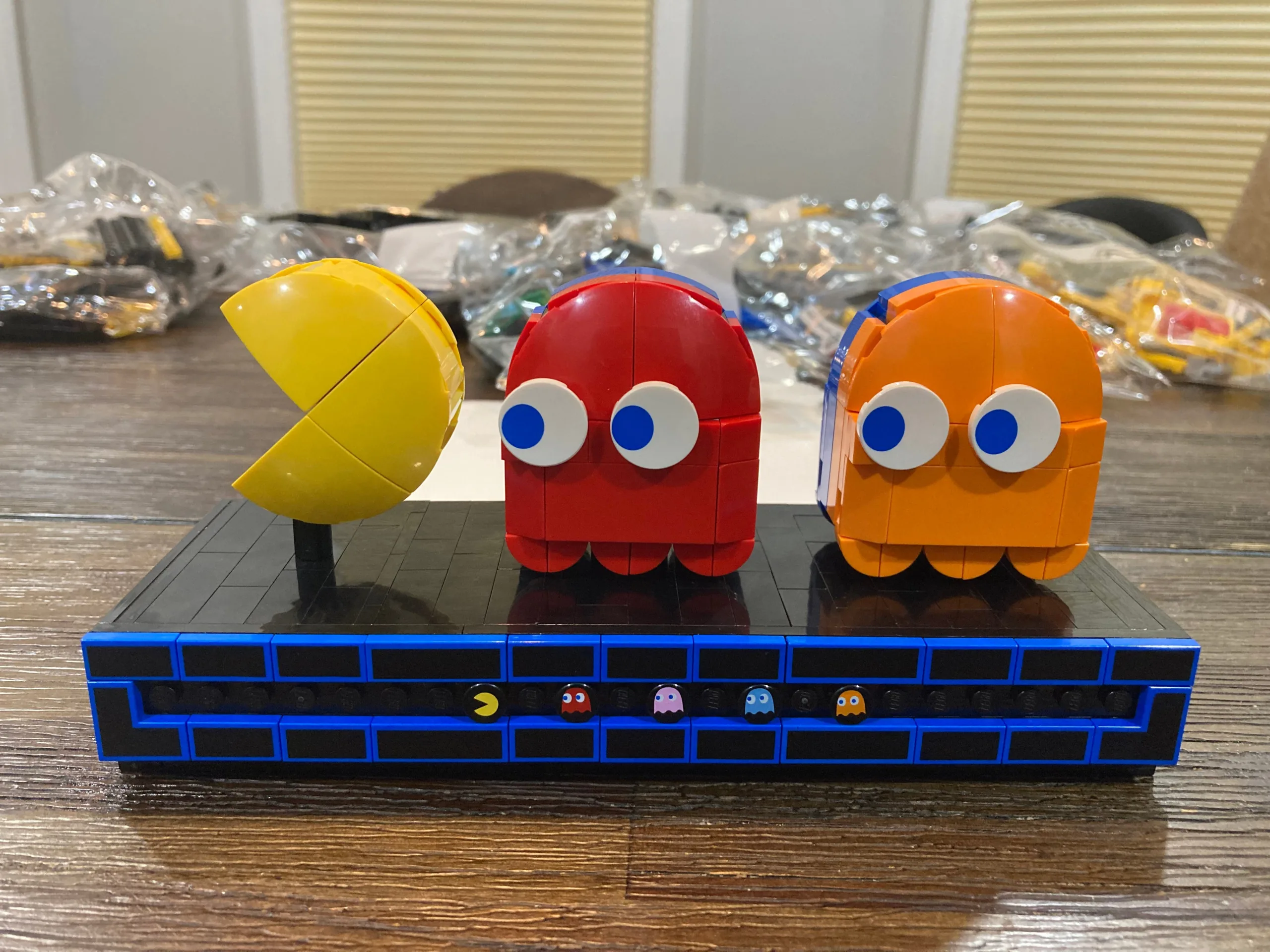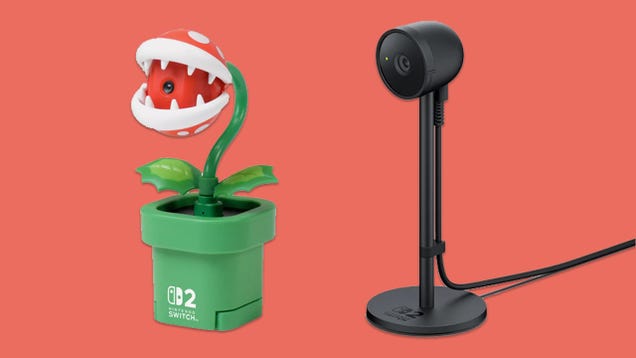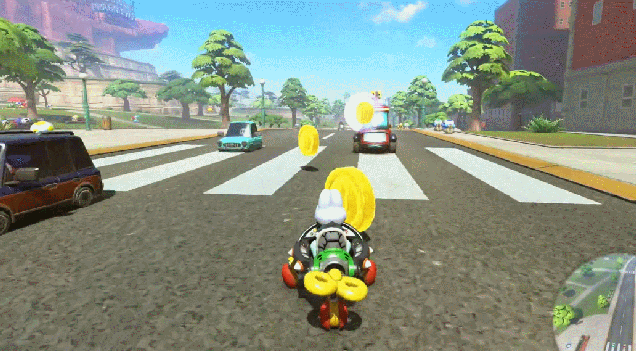
The LEGO Pac-Man Arcade is a mechanical marvel, and every step of the build reminds you of that fact. You can feel the trial-and-error that went into creating something this seamless, and after I finished building it, I was shocked that it worked as smoothly and consistently as it did. My 8-year-old son couldn’t stop turning the crank.
Some of the LEGO designers’ best, most engaging work are their video game sets, geared at adults who grew up during the golden age of the arcades and the dawn of the console era. In 2020, LEGO released a scaled replica of the Nintendo Entertainment System, complete with an ’80s-style television. Turn the crank on its side, and a tiny Mario sprite played through a Super Mario Bros-inspired level on the TV’s ‘screen.’ The designers accomplished this effect by laying down hundreds of smooth tiles to create a sort of 8-bit tapestry, and then wrapping that around a spindle that rotated on a crank.
It was a brilliant bit of engineering, but unfortunately, the television completely encased the mechanical elements, and all you could see was the cumulative final effect. The LEGO Pac-Man designers did not make the same mistake. The arcade cabinet opens up in the back via a latch and catch, so any curious onlooker can see how it all works.
The LEGO Pac-Man Arcade is a mechanical marvel.
The LEGO Pac-Man Arcade is a scaled down facsimile of the original arcade cabinet and game, with a single joystick on its dashboard, a coin insert slot on its bottom right (push a button, and it emits a familiar red glow), and multiple decals on its sides and front panel. The machine has a score display on its upper left, which you can change with a dial to display four different high scores. A bar along the bottom displays the number of lives and the cherry icon, denoting the first level.
The arcade cabinet ‘screen’ displays a recreation of Pac-Man’s first level. It even has bonus cherries in the middle-bottom of the maze. Turning the crank moves three printed tiles along a snaking conveyor chain, which creates the illusion that Blinky and Pinky are chasing after Pac-Man. Inky runs on a separate chain track in the bottom right of the screen.
And Clyde is in the holding pen at the center of the maze. He moves back and forth, just as the ghosts did in the game, thanks to a lever element that’s attached to the gear system and moves from side-to-side. All the movable elements operate off of the same crank.
In the instruction booklet, the designers discussed the difficulties of making LEGO Pac-Man and the Ghosts turn corners. By lining the track on the maze with smooth tiles, they created a slip-and-slide effect that reduced the friction on each turn. They also used blocking elements to tighten the chains against their gears, ensuring they would run on a strictly delineated route and not get caught on an edge or a corner due to random chance.
But before you start the arcade cabinet, you build a little display of Blinky and Clyde chasing after Pac-Man. Scalewise, it’s about the size of three Funko Pop figures, side-by-side. The ghosts are colored red and orange, but they are both blue on their opposite sides. And if you push a button on the back, the figures flip 180 degrees, so that Pac-Man is chasing the blue ghosts. The finished display can be shown separately, or it can be a topper on the finished arcade cabinet.
Then you build the arcade, first by building the foundation of the cabinet and its sides, and then by building the game board, which is mounted on the inside with snap-in clips.. This is the most redundant part of the build, but it is necessary—the Pac-Man pellets are tiny white rods inserted into black pins, and there’s 64 of them. And as tedious as it is, you are building something that is recognizable. Your motivation to see the final product makes the work go quickly.
The final part of the build, after you’re done building the arcade, is a miniature, Minifigure-sized depiction of a rec room with a Pac-Man arcade, and a gumball machine. You get a single Minifigure to stage the scene—a girl wearing an ’80s-style Pac-Man jacket and Pinky T-shirt. If you open the arcade’s back panel, there’s a place to store the Minifigure build, which is very convenient. So many LEGO sets provide multiple accessories and freestanding elements, but then provide no place to put or store them, so it’s easy to lose track of them.
The final result looks solid, like it has real weight and substance to it. And picking it up confirms that—LEGO sets are notoriously expensive, but this one does look and feel like its cost, and the central mechanism works extremely well. One can only imagine the difficulty of designing something out of bendable plastic that not only works, but is sturdy enough to persist in working—weeks, or months, or even years from now. But the best sets do manage it. The chain lift on my LEGO Roller Coaster works as well as it did on the day I built it five years ago, though it’s no coincidence that the set’s high quality also made me feel responsible for maintaining it.
This is something that you’ll want to show off, display, and maintain for years to come.
Likewise, the LEGO Pac-Man Arcade is built to last. This is not a set that, six months from now, ends up in the massive LEGO sandbox with other broken builds. This is something that you’ll want to show off, display, and maintain for years to come.
The LEGO PAC-MAN Arcade, Set #10323, retails for $269.99 USD, and it is composed of 2651 pieces. It is available for purchase now in the online US LEGO Store.






